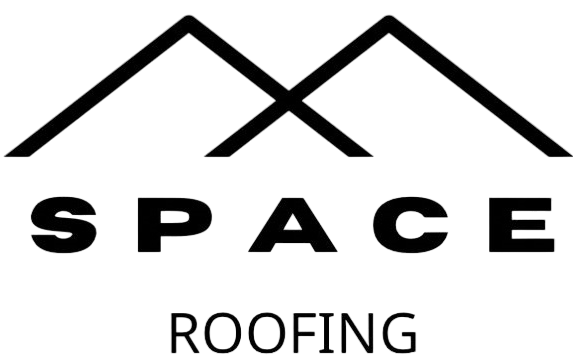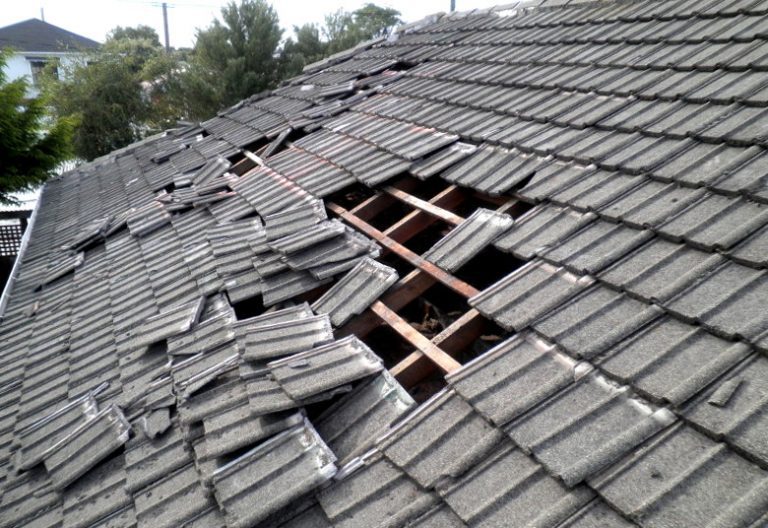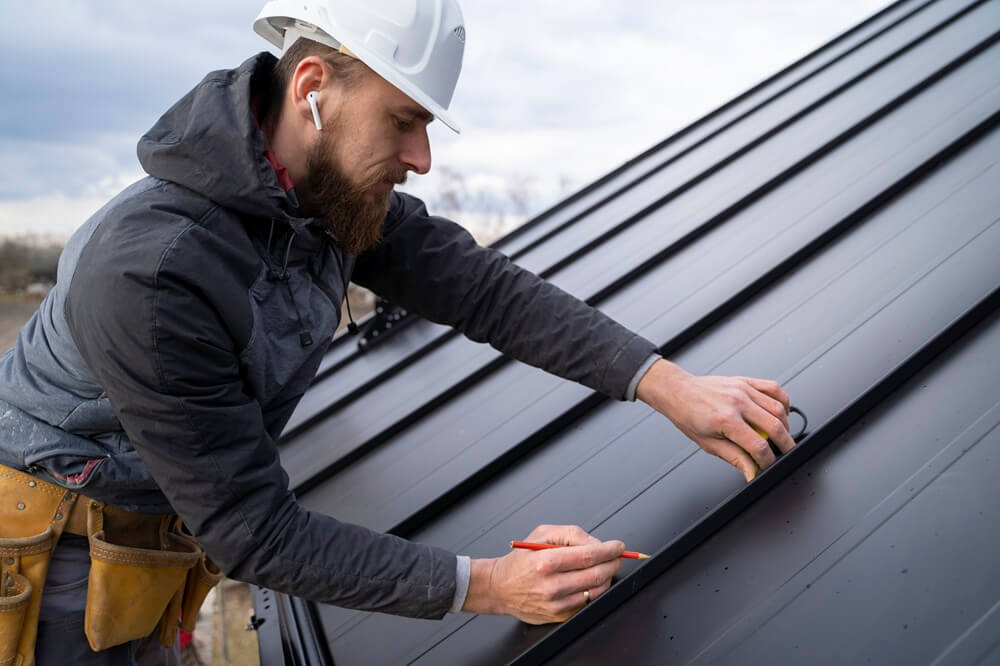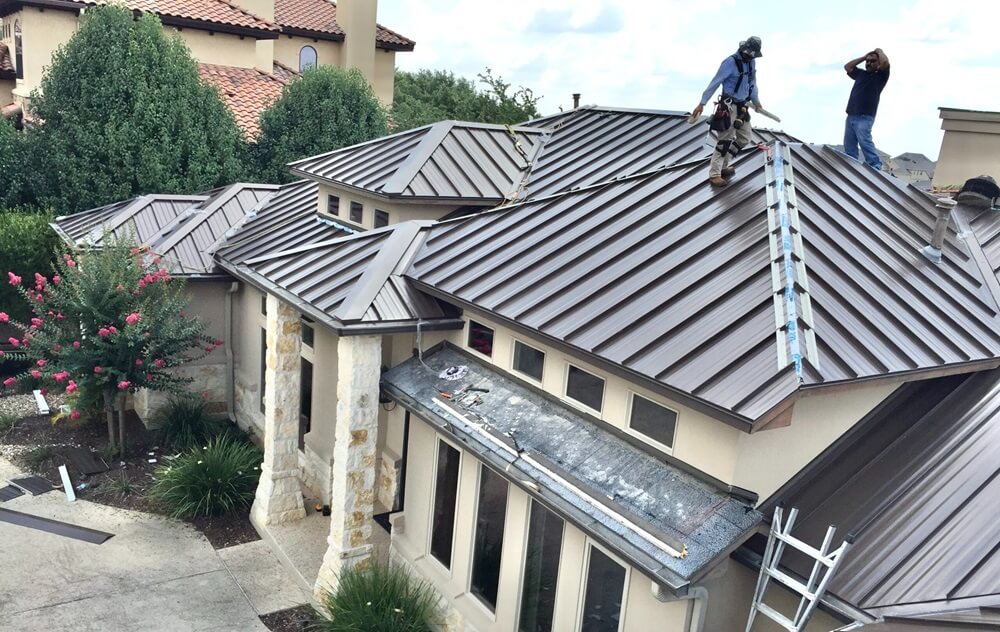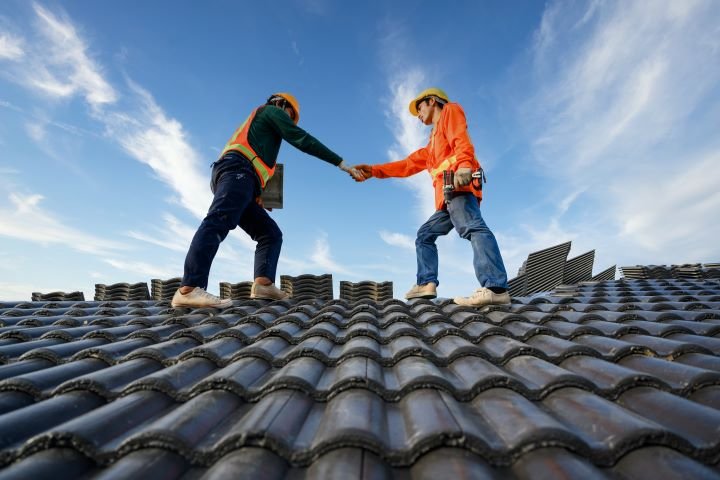Some regions get more dust storms and thunderstorms than other places. Roofing contractors in Dallas are plenty because we get quite a few storms every season. The roof damages from these storms require quick action. Roofs are the part of the house that cannot remain damaged.
If your roof has suffered from storm damage and needs urgent attention, our Storm Damage Roofing services can provide the necessary expertise to restore it to its former state.
In any emergency, the roof is the first thing that should be fixed because if the roof and walls are damaged, the house is at risk. Homeowners must realize the gravity of damages after a storm. Storms can wreak havoc on your home, and your roof is often the first line of defense, which cannot be ignored.
Inspecting your roof after a storm is crucial to identify any damage and prevent further issues. We will discuss how to spot signs of roof damage, and you can learn how to address the damages promptly.
Signs of Roof Damage
If you consult any roofing contractors in Dallas, their first question will be about the kind of damage after the storm. Here are some primary types of damages:
Visible Signs of Damage:
Visible damage signs include missing or damaged shingles. Strong winds can rip shingles from their place, leaving you with damaged plaster on the roof. When inspecting the roof, look for ripped plaster or shingles around which there will be cracks and loose plaster. Look carefully around chimneys, vents, and the eaves, where damage is more common.
Granule damage can also be serious because it spreads like fire and may damage a larger area. Asphalt shingles have small granules that protect them from the sun’s UV rays. In heavy rain storms or hail storms, these granules loosen up, leaving patches of exposed asphalt. Excessive granule loss indicates weakening of the shingles, which can lead to bigger losses.
Another common visible damage is holes or punctures from fallen tree branches or flying debris. These holes can become entry points for water, which means no protection for you and your family. Water stains on your ceilings or walls are a clear sign of a leak in your roof. You must consult a good contractor in time if you see these visible signs.]
Invisible Signs of Damage:
There can be invisible leaks in the roof if you live in a place with more rainfall. Even if you don’t see a leak, warped walls, peeling paint, or musty odors can indicate hidden moisture problems that need attention. Moreover, clogged gutters are equally dangerous and do not show visible signs of damage. This damage results from a failed drainage system on your roof. This damage can lead to water pooling around your foundation, potentially causing structural damage.
If you see a sudden hike in your electricity bill, the roof insulation is damaged, and your HVAC system needs to work more to give you the same indoor temperature as before.
How to Address Roof Damage?
When you feel that there is damage, do not go up to check the roof alone, as that can be dangerous. Here are a few things to do when you think that your home roof is damaged:
Note the Damage:
When you feel that there is leakage or drainage issue or even if the roof is flaking due to broken shingles, record the event by taking pictures or make a video so that you can show it to the roofing contractors in Dallas while discussing the repair work. Ensure to include timestamps. This documentation will be helpful when filing an insurance claim as well.
Contact Your Insurance:
Report the damage to your insurance company immediately. Remember, delays can complicate the matter and you wouldn’t want to do that.
Temporary Work:
While waiting for a professional inspection, you can take steps to cover damages temporarily. For example, plaster holes or cover exposed areas with a tarp to prevent leaks.
Preventive Measures:
After locating the damage, you will contact insurance and some roofing contractors near you. However, after the work is done, make sure that you check the rooftop regularly to see if there is any damage. After every rain, or even after a few months, check your rooftop for any small or big damages. Ensure regular maintenance work is done to avoid any serious or major loss due to damages getting out of hand.
Conclusion
At Space Roofing, we understand the roof maintenance and repair work needed for different damages. All homeowners must know how to identify signs of roof damage after a storm. Roofing contractors in Dallas are aware of the kinds of damages caused by rain and hail storms. We have discussed the types of damages and steps to follow after you observe damages.
FAQs
What are the common signs of roof damage after a storm?
Look for missing or damaged shingles, dents on metal surfaces, water stains on ceilings, granules in gutters, and visible leaks. These signs often indicate roof damage that needs immediate attention to prevent further issues.
How can I safely inspect my roof after a storm?
Use binoculars to inspect the roof from the ground. Look for loose or missing shingles and debris. Avoid climbing on the roof unless you have proper safety gear and experience.
What should I do if I find roof damage after a storm?
Contact a professional roofing contractor for a thorough inspection and repair estimate. Document the damage with photos and notes for insurance purposes. Avoid DIY repairs unless you’re experienced.
Can minor roof damage after a storm lead to major problems?
Yes, even minor damage can lead to leaks, mold growth, and structural issues over time. Addressing small problems promptly can prevent costly repairs and maintain the roof’s integrity.
Are there specific signs of hail damage on a roof?
Hail damage often appears as dents in shingles, metal flashing, and gutters. Check for bruising or dark spots on shingles and granules collecting in gutters. These signs indicate impact damage that needs professional assessment.
